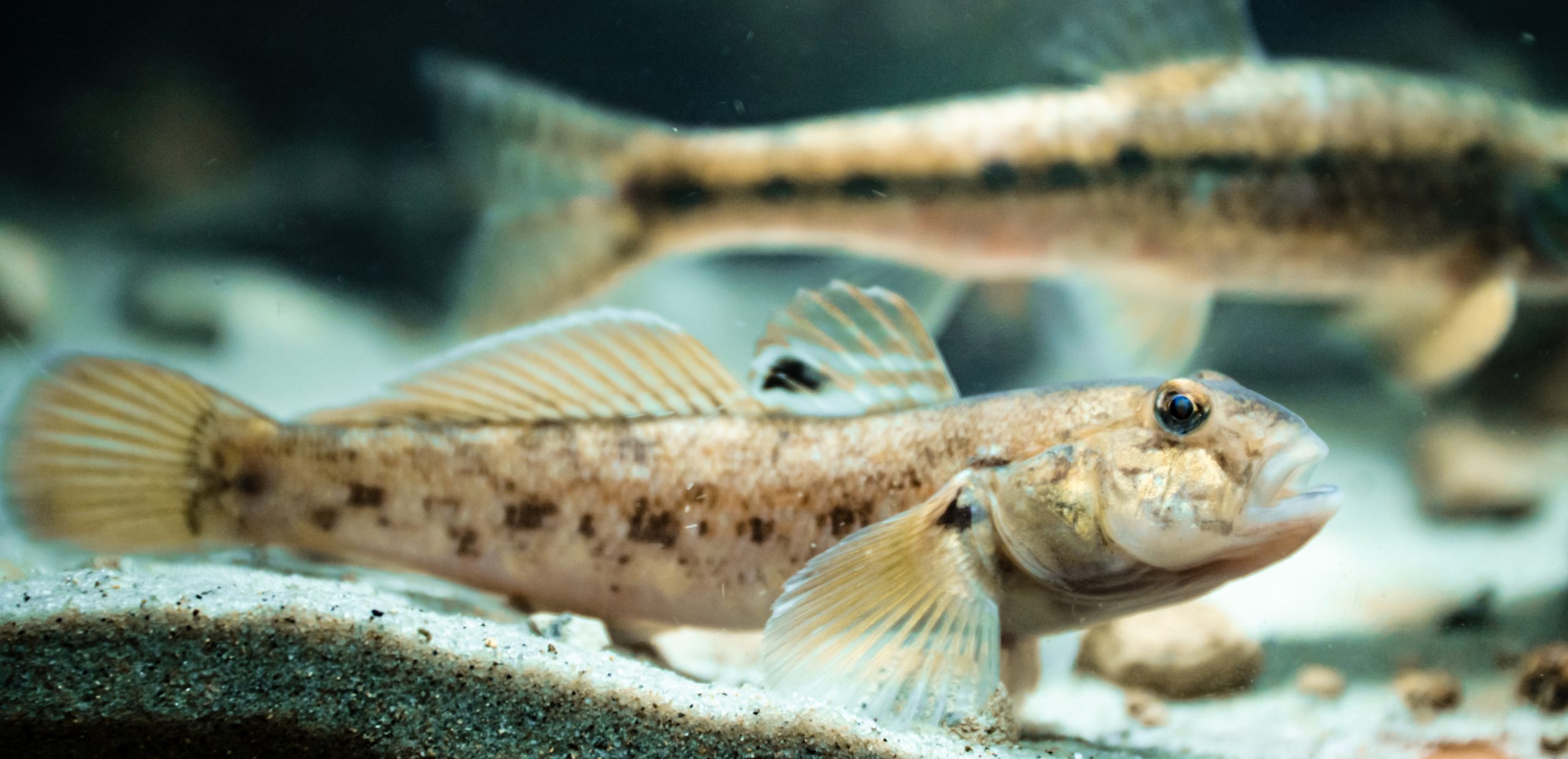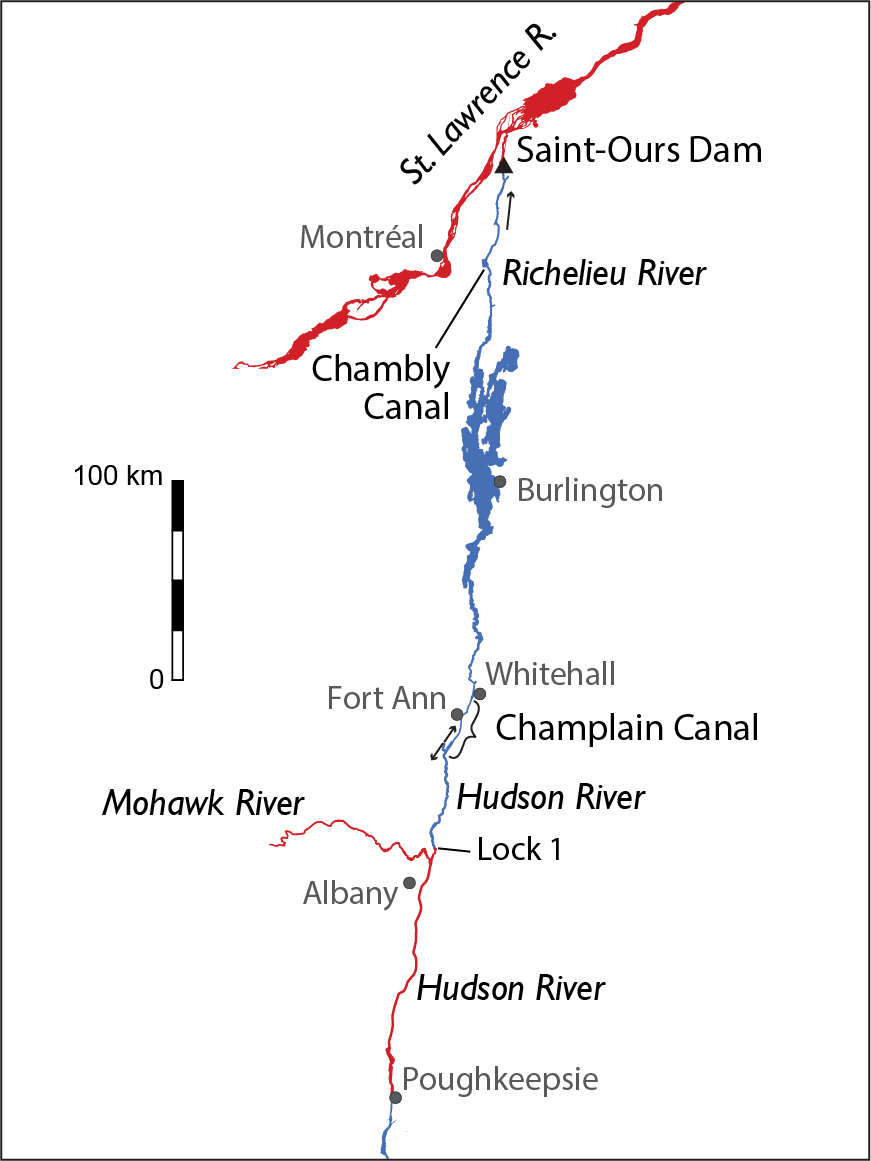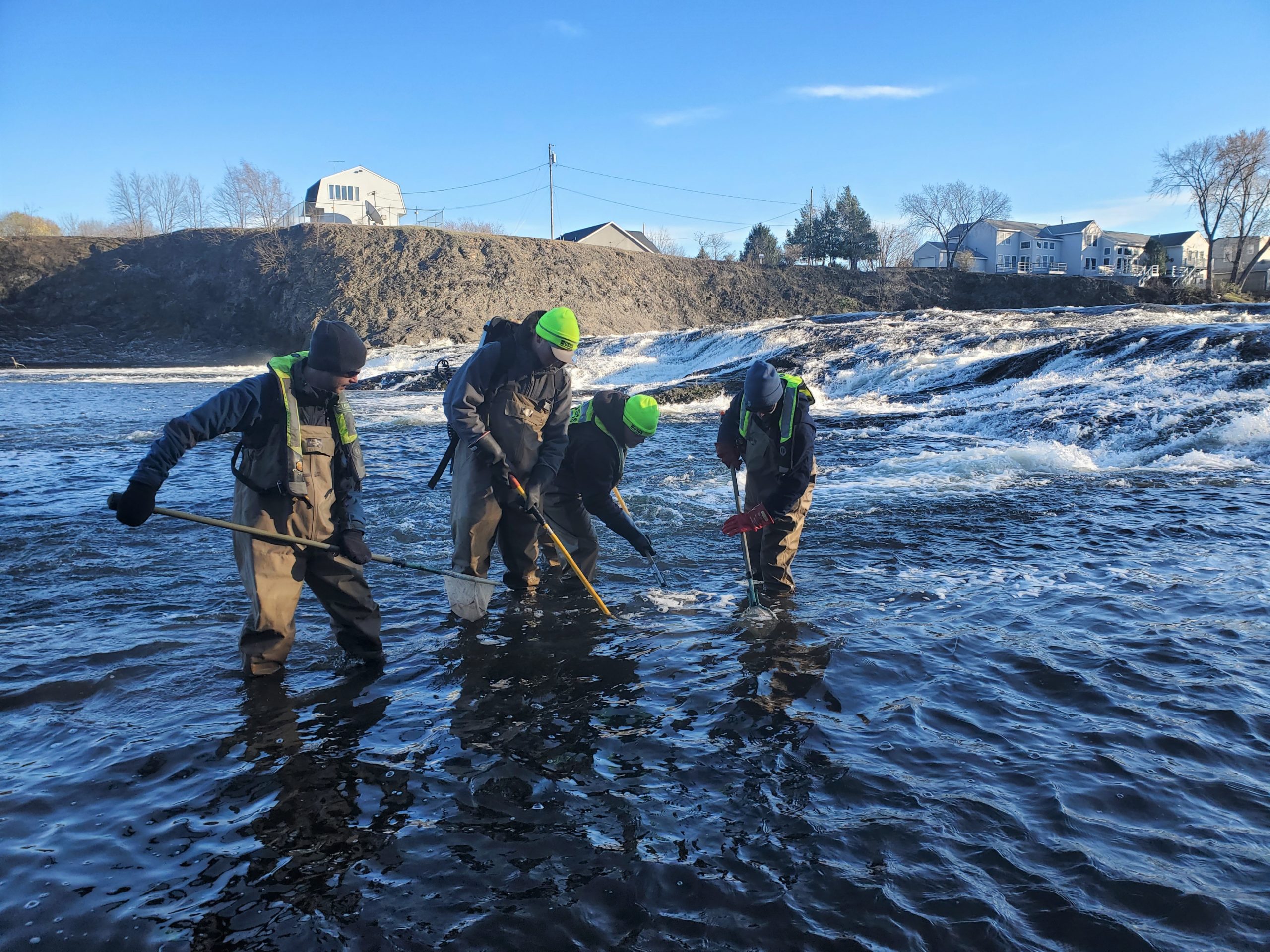First found in the St. Clair River in Michigan in 1990, the round goby (Neogobius melanostomus) took five years to colonize all five Great Lakes. With the highly invasive fish making its way towards the Lake Champlain basin, a multi-agency effort is coordinating to stop the spread of this aggressive – and ecologically disruptive – fish.
“The round goby is poised to have significant ecological and economic impacts in the Northeast,” said Meg Modley, NEIWPCC environmental analyst and aquatic invasive species management coordinator at the Lake Champlain Basin Program (LCBP). “An extensive interstate and interagency collaborative early detection monitoring and spread prevention plan is underway to address this – and future – threats.”

Round gobies are benthos, or bottom-dwelling, and outcompete native fish for food and habitat, resulting in decreased fish biodiversity. They prey on invertebrates, small fish and fish eggs, as well as zebra mussels. While devouring large amounts of invasive mollusks reduces the population, the zebra mussels contain toxins; therefore, their consumption poses a risk of bioaccumulation further up the food chain.
Lake Champlain’s recreational fishing industry stands to be impacted by the round goby as well. They are aggressive bait taking fish and can change the angling experience by dominating bites on the line. Gobies reproduce quickly and have a voracious appetite – including for the eggs and fry of native bass and lake trout, both popular with anglers. Finally, they can also carry Viral Hemorrhagic Septicemia (VHS), a deadly fish disease affecting native species. While not yet present in Lake Champlain, VHS can affect over 25 species of freshwater fish.
From the North and the South
Round gobies were initially introduced to North America (Great Lakes) via trans-Atlantic freight ships discharging ballast water – the water stored in a ship’s hull to provide stability. Spread throughout the Great Lakes region and into the Northeast was facilitated by bait buckets, swimming and downstream flow, often capitalizing on the canal system. In 2021, the U.S. Geological Survey (USGS) identified gobies below Lock C1, part of the Champlain Canal of the Hudson River near Waterford, New York – roughly 60 miles from Lake Champlain. To the north, gobies are established in the Richelieu River downstream of the Saint-Ours Dam in Quebec. Continued monitoring is focused throughout the upper Richelieu River and expanding into the Chambly Canal in Quebec.

Taking Action
The LCBP’s Lake Champlain Aquatic Invasive Species (AIS) Rapid Response Task Force coordinated early detection monitoring and spread prevention education and outreach efforts with New York, Vermont, and Quebec jurisdictions, including the USGS, U.S. Fish and Wildlife Service (USFWS), Parcs Canada, and the New York State (NYS) Canal Corporation.
While the Champlain Canal was open for the summer 2022 season, the NYS Canal Corporation implemented “double flushing” for locks C1 and C2. This strategy involves lowering the lock water as a boat approaches the lock and again once the boat enters it. Draining the lock creates turbulence, helping to push invasive species away from the lock and limit upstream spread.
Additionally, the Round Goby Rapid Response Plan was developed by New York’s Canal Corporation and Department of Environmental Conservation (NYSDEC) with input from the Lake Champlain AIS Rapid Response Task Force. The plan incorporates educating the public about prevention strategies as well as detailed immediate discovery and rapid response plans based on specific scenarios.
2022 sampling methods included: trawling, when a net is pulled behind one or more boats; seining, which traps fish via a surrounding net that hangs vertically in shallow water; electrofishing, an approach that temporarily stuns fish using electricity; and environmental DNA, or eDNA, analysis of DNA collected from the environment (water, in this case) used to detect the presence of a species. The sampling results showed slightly northward expansion of the gobies in the Hudson River, to the southside of Lock C1. Intensive sampling will continue in 2023 and 2024 with U.S. and Canadian partners.
“The LCBP Aquatic Nuisance Species Subcommittee and AIS Rapid Response Task Force are preparing not just for the round goby – the invasive species of the moment – but for the many other invasive species that we anticipate becoming an issue in the future,” said Modley. “We are building partnerships and developing response and management plans that will serve us in addressing the ongoing challenge of invasive species in the region.”
Additionally, Modley has updated NEIWPCC commissioners about the round goby on multiple occasions – spreading awareness to key state agency personnel in New England and New York. She also works closely with Erik Reardon, who holds a newly formed role as NEIWPCC environmental analyst and NYSDEC AIS outreach specialist. Reardon often speaks with community members at Upper Hudson River boat launches, marinas, town offices, fishing clubs, and community events, and reports that it is challenging to convey the seriousness of the threat when the devastating effects are largely invisible.

“As a new bottom-dwelling species, most people aren’t interacting with this fish unless they find it at the end of their fishing line, unlike with more visible invasive species like water chestnut,” said Reardon. “In addition to raising awareness about the potential ecological and economic impacts, I use the round goby as a signal species for invasive species threats that have yet to manifest in the region. The goby is not the first invasive species – and absent meaningful intervention, will likely not be the last – that advances up the canal system to Lake Champlain.”
How you can help
- Clean, drain and dry all watercraft and fishing equipment to prevent the spread of round goby and other aquatic hitchhikers.
- Don’t dump bait buckets into the water – follow local baitfish regulations.
- Do not move live fish (including baitfish) from one waterbody to another.
- Report all sightings of round goby to relevant agencies, such as your state fish and wildlife department.
- Educate yourself and others about how to identify common AIS in your area.
Resources
- AIS in Lake Champlain (LCBP)
- Champlain Canal Aquatic Invasive Species Barrier Study Phase I Report
- Hudson River Aquatic Invasive Species Task Force
- USGS: Round Goby
Learn more: Hear from Eric Howe, NEIWPCC/LCBP program director, on protecting Lake Champlain from the round goby during a Mountain Lake Journal PBS interview.